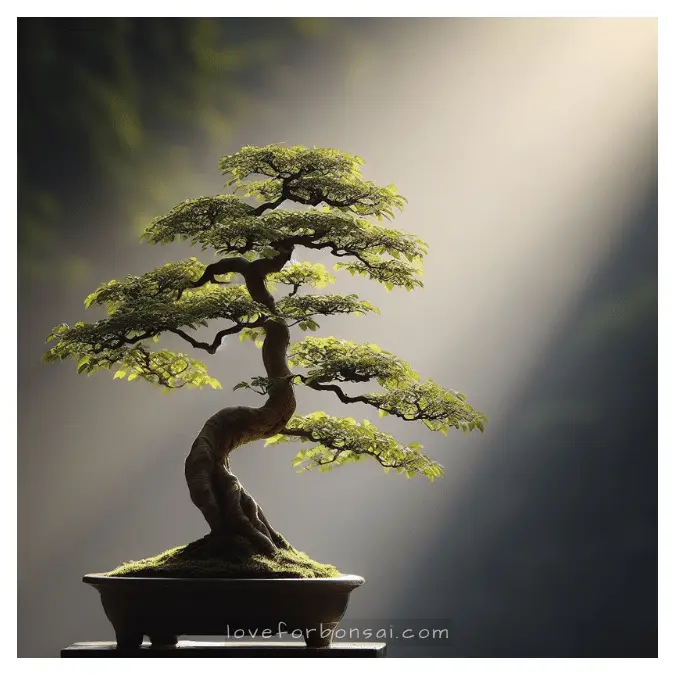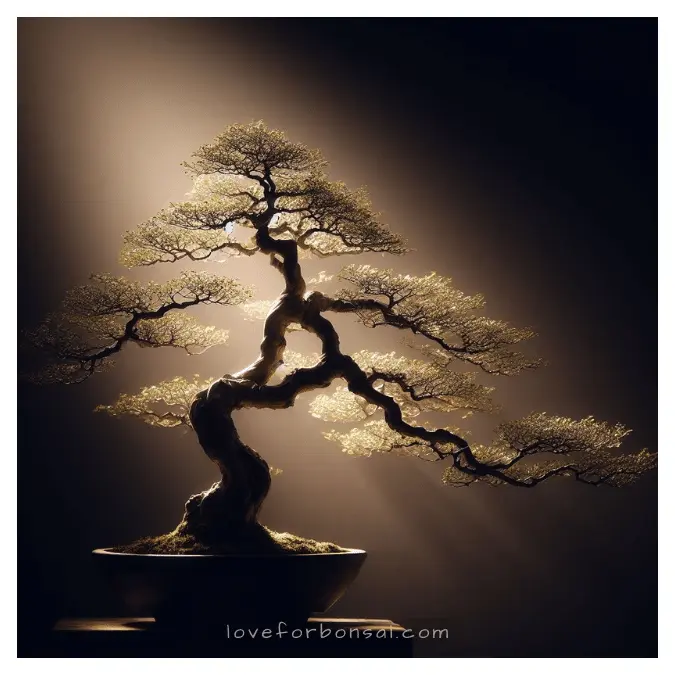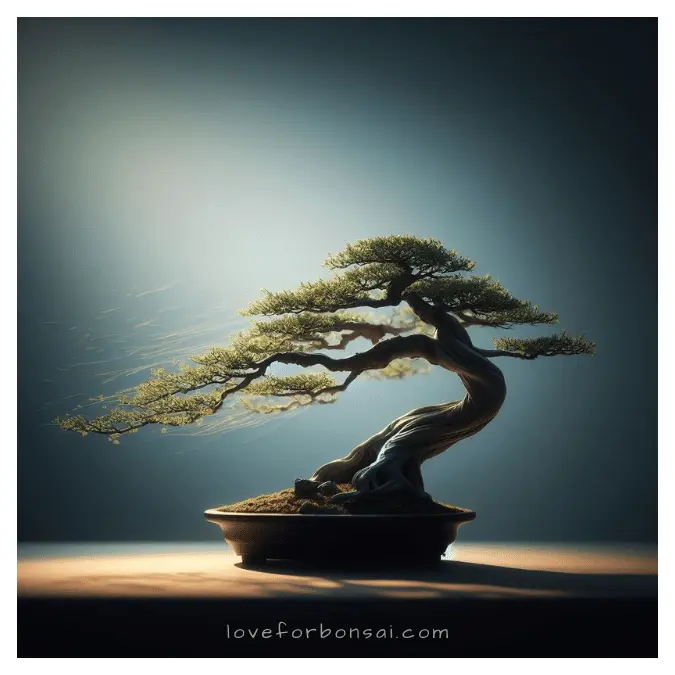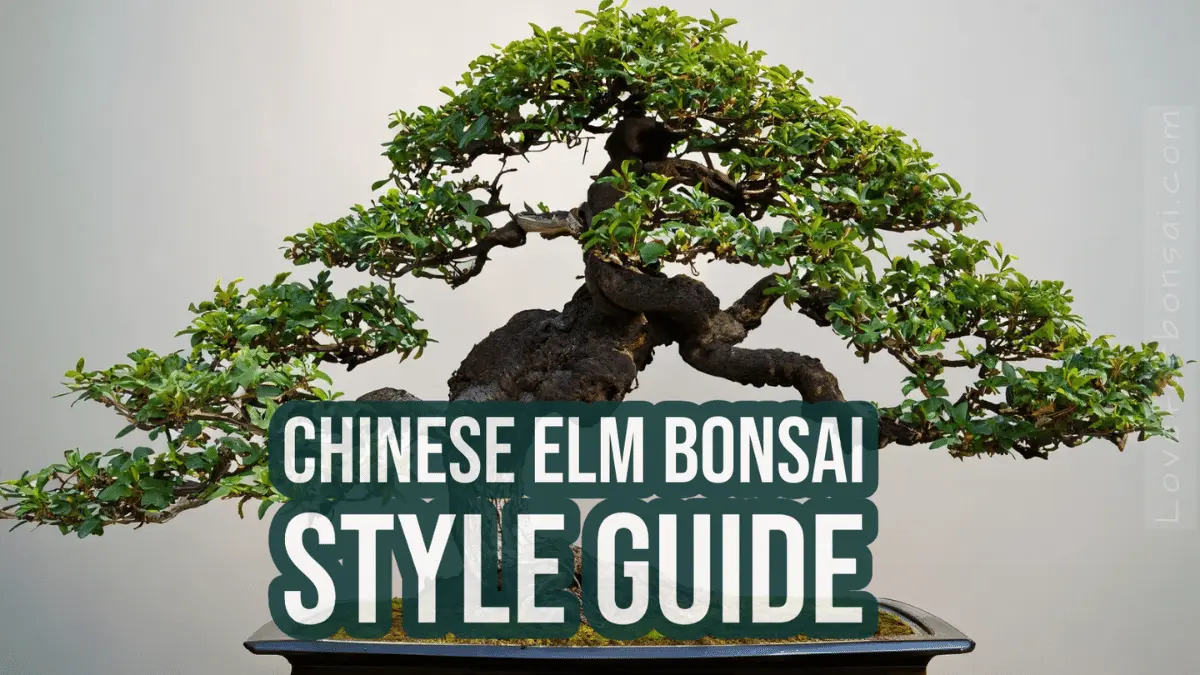Bonsai gardening is a captivating art form that allows you to create miniature trees that capture the essence of their full-sized counterparts. One tree species that’s particularly well-suited for bonsai is the Chinese Elm.
With its adaptability and forgiving nature, Chinese Elm bonsai can be styled in various captivating ways.
In this blog post, I’ll share my experience in handling Chinese Elm bonsai and explore the diverse styles you can achieve with this versatile tree.
Introduction to Chinese Elm Bonsai
Chinese Elm (Ulmus parvifolia) is a resilient and adaptable tree species that thrives in various climates. It is characterized by small, serrated leaves and a tendency to develop a beautiful bark as it matures.
These features make it an ideal candidate for bonsai cultivation. Now, let’s dive into the various styles you can explore when creating your Chinese Elm bonsai.
| Style | Description | Suitability for Chinese Elm |
|---|---|---|
| Hokidachi (Broom style) | Exposed trunk with a crown of fine branches forming a ball shape. | Fantastic for Chinese Elm. |
| Chokkan (Formal Upright) | Clearly visible trunk, thicker at the base, slimming down towards the top. | Suitable, but trunk development needed. |
| Kengai (Cascade) | Mimics trees growing downwards, with horizontally branching curves. | Can be wired into this shape. |
| Han-kengai (Semi cascade) | Similar to Cascade but less severe. | Achievable with care. |
| Bunjingi (Literati) | Crown has growth, representing trees close to each other. | Perfect fit for Chinese Elm. |
| Fukinagashi (Windswept) | Reflects the effects of strong winds on tree growth. | Chinese Elm adapts well. |
| Sokan (Double Trunk) | Two trunks growing from the same root system, larger one forming the top. | Easily created with Chinese Elm. |
| Kabudachi (Multitrunk) | More than two trunks from the same root system, largest one forming the top. | Possible with Chinese Elm’s fast budding. |
| Yose-ue (Forest Style) | Several trees in one pot, staggered trunks, single large crown of leaves at the top. | Chinese Elm’s robust root system is suitable. |
| Sharimiki | Trunk and branches stripped of bark, bleached to a light color by the sun. | Chinese Elm’s beautiful bark suits well. |
Is Your Chinese Elm Bonsai Yearning for More Light?
Formal Styles

1. Hokidachi (Broom Style)
Description: Hokidachi is a formal style that showcases an exposed trunk with a crown of fine branches forming a ball shape. As your Chinese Elm matures, its beautiful bark becomes a focal point.
Suitability: Ideal for Chinese Elm. Especially captivating during cold winters when the network of branches is exposed.
2. Chokkan (Formal Upright)
Description: This style closely resembles many trees in nature, with a clear trunk that is thicker at the base and slimming down towards the top. The branches begin approximately ¼ of the way up the trunk, with a single branch topping the tree.
Suitability: Suitable for Chinese Elm, but it requires time for the trunk to develop. Wiring and trimming can help create the necessary foliage pads.
3. Moyogi (Informal Upright)
Description: Similar to Chokkan but with a trunk shaped into an ‘S’ shape. The branches grow out from each turn, and the trunk remains thicker at the base.
Suitability: Perfect for Chinese Elm. Wiring is necessary to encourage the correct shape of the young tree.
Common Chinese Elm Tree Problems and How to Solve Them
Natural Styles

4. Shakan (Slanting)
Description: This style imitates trees leaning due to consistent wind or growing in the shade. The tree leans at an angle between 60° and 80° to the ground, with the first branch growing in the opposite direction.
Suitability: Chinese Elm is well-suited for this style. Achieve the lean through wiring or mimic nature using a shadow.
5. Kengai (Cascade)
Description: Mimics trees growing on cliffs, forced to grow downward. The trunk bends downwards in an ‘S’ shape, with horizontal branches alternating from the curves of the ‘S’.
Suitability: Chinese Elm can be wired into this shape, but some other tree species have a natural drape that’s easier to manage.
6. Han-kengai (Semi Cascade)
Description: Similar to Cascade style but less severe. Achievable with care on Chinese Elm.
Suitability: Chinese Elm can adapt to this style relatively quickly.
Unique Styles

7. Bunjingi (Literati)
Description: Represents trees growing close to each other, with only the crown having growth. The trunk is not straight, and branches may be stripped of their bark, creating a rugged appearance.
Suitability: Chinese Elm is a perfect fit. Explore more about Literati Bonsai in our short guide.
8. Fukinagashi (Windswept)
Description: This style reflects the effects of strong winds on tree growth. Chinese Elm can adapt to this style with careful pruning and trunk wiring when young.
9. Sokan (Double Trunk)
Description: Features two trunks growing from the same root system, with the larger and more developed trunk forming the top of the tree.
Suitability: Achievable with Chinese Elm using various methods, such as splitting the original trunk or using multiple buds.
10. Kabudachi (Multitrunk)
Description: Similar to Double Trunk style but with more than two trunks growing from the same root system.
Suitability: Chinese Elm is well-suited for this style, thanks to its quick budding capability.
11. Yose-ue (Forest Style)
Description: Involves planting several trees in the same pot, creating the appearance of a forest with staggered trunks and a single large crown of leaves at the top.
Suitability: Chinese Elm is an excellent choice for this style due to its natural growth habit.
12. Seki-joju (Growing On a Rock)
Description: Trees grow roots over rocks to find soil and water. Chinese Elm can adapt to this style when young by placing its root system over a chosen rock.
How to Prune Your Chinese Elm Bonsai Tree for Maximum Growth and Beauty.
Special Styles
13. Growing in a Rock Bonsai Style (Ishisuki)
Description: Similar to the above style, but roots grow within cracks or hollows in rocks.
Suitability: Chinese Elm will naturally adapt to this style.
14. Ikadabuki (Raft Style)
Description: The tree’s trunk has fallen over, but there is enough root system for new growth, forming several branches that create trunks of new trees.
Suitability: Chinese Elm, with its many buds, can take this form.
15. Sharimiki
Description: Part of the trunk and branches are stripped of bark and bleached to a very light color by the sun.
Suitability: Chinese Elm’s beautiful bark can be a fantastic feature in this style.
Symbolism and Meaning of Bonsai Trees
Final Thoughts
In conclusion, the Chinese Elm is a highly versatile tree for bonsai cultivation. It can adapt to various formal, natural, unique, and special styles, allowing you to create a captivating miniature tree. Keep in mind that while these style descriptions provide guidelines, there’s room for creativity and personal interpretation.
Enjoy the journey of creating your Chinese Elm bonsai, and don’t be discouraged if it doesn’t perfectly match the descriptions.
